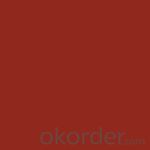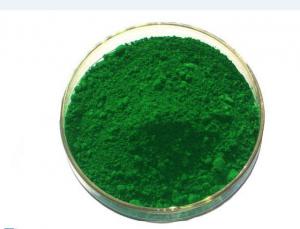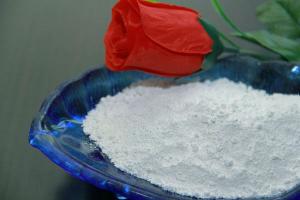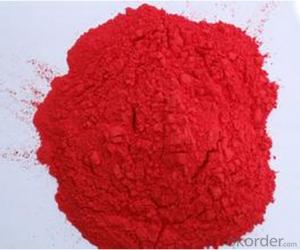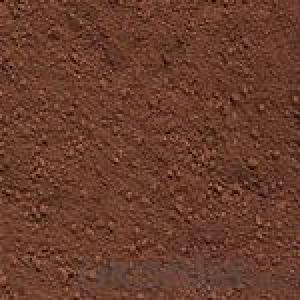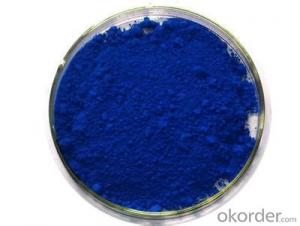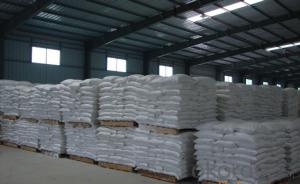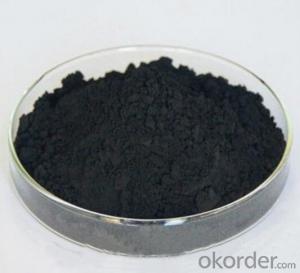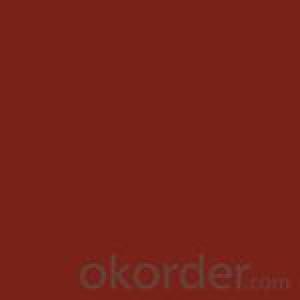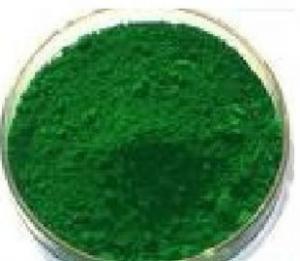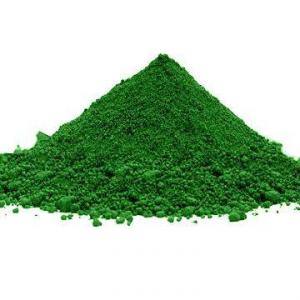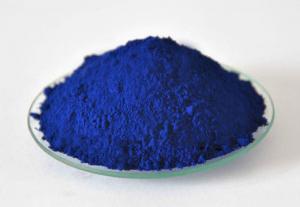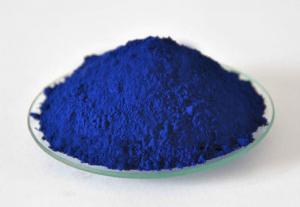Iron oxide red 190
- Loading Port:
- China Main Port
- Payment Terms:
- TT OR LC
- Min Order Qty:
- -
- Supply Capability:
- -
OKorder Service Pledge
OKorder Financial Service
You Might Also Like
Quick Details
· CAS No.: 1309-37-1
· Other Names: Iron oxide (Fe2O3)
· MF: Fe2O3
· EINECS No.: 215-168-2
· Place of Origin: China (Mainland)
· Usage: Ceramic Pigments, Coating Pigment, Cosmetic Pigment, Ink Pigments, Plastic & Rubber Pigment, Leather Pigments, Other
· Model Number: 190
· Type: Iron Oxide
· Style: Inorganic Pigment
· Appearance: Powder
· color: Iron Oxide Red, Yellow, Black, Blue ,green
· wetherability: very good
· certificate: ISO9001:2000
· heat-resistant: very good
Packaging & Delivery
Packaging Details: | 25 kg/ craft paper bag, 22MT/20FCL (Iron Oxide Red); 25 kg/ craft paper bag, 13 MT/ 20FCL (Iron Oxide Yellow); 25 kg/ craft paper bag, 20MT/ 20FCL (Iron Oxide Black) |
Delivery Detail: | Within 2weeks after get the advanced money |
Specifications
synthetic red iron oxide 190
21 years factory
supply CCIC,ISO,SGS inspect
Free samples will sent to the customer
Iron oxide red 190
1. Product Description
1). Bright-colored exquisite powder.
2). Good weatherability (Lightfastness, heat-resistant and alkali resistant)
3). Strong tinting power, excellent coverage and fine dispersion.
4). We can supply iron oxide with different color, specifications and packing
5). Only dissolved in heat strong acid
2. Product detailed Specification
Item | Index |
Primary color |
|
Diluted color |
|
Iron content (Fe2O3) 105℃ drying%≥ | 80 |
Fineness (325 mesh wet sieve residue)%≤ | 0.3 |
Oil absorption, g/100g | 14-20 |
Moisture & 105℃ volatile% | 1.0 |
Water solubles% ≤ | 1.5 |
Water suspended matter PH value | 5-7 |
Relative tinting strength (compared with standard sample%) ≥ | 95 |
Water extract pH ml≤ | 20 |
We also have many of other colors and type, if you have the special request, please email me freely
3. Product Application
brick,concrete, roofing tile, paver, stucco, masonary, paint, coating, rubber, plastic, paper and leather industries etc.
4. Product Packing:
25 kg/ craft paper bag, 22MT/20FCL (Iron Oxide Red);
25 kg/ craft paper bag, 13 MT/ 20’FCL (Iron Oxide Yellow);
25 kg/ craft paper bag, 20MT/ 20’FCL (Iron Oxide Black)
5.superiority
1.accept the inspection of SGS, CCIC and the other international inspection department.
2.Free samples will sent to you.
3.21 years experience.
4.professional skills
- Q: Please help me answer these Genetics problems. These are the problems that was assigned in the previous exams, but the professor doesn't provide the answer keys or a review session to go over these.Pigment in the mouse is produced only when the C allele is present. Individuals of the cc genotype have no color. if color is present, it may be determined by the A, a alleles. AA or Aa results in the agouti color, while aa results in the black color. In 3 crosses between agouti females whose genotypes are unknowns and males of the aacc genotype, the following phenotypic ratios were obtained. Female 1: 8 agouti 8 colorlessFemale 2: 4 agouti 5 black 10 colorless
- interior the 1st bypass AACC x aacc, discern a million will produce all AC gametes and discern 2 ac. Your F1 will all be AaCc. As all have the C allele they are going to be pigmented and as they're Aa they're going to all be agouti. Your F1 bypass is AaCc x AaCc. each and each discern can produce 4 gametes AC, Ac, aC, ac. To get all the genotypes you would be able to desire to entice a 4 x 4 Punnett sq.. each and each column and each and each row has between the 4 gametes in it and the cells comprise the blended genotypes. in case you count type up your genotypes you will discover 9 comprise the two A and C, those are agouti, 4 comprise cc, and all of those would be white regardless of the genotype at A, 3 comprise aa and C, those will all be black. So your phenotypic ratio would be 9:4:3 agouti: white: black the subsequent 3 crosses are all attempt crosses - you employ a recessive discern to artwork out the genotype of the different discern. a million. As lots of the offspring are colourless, you be attentive to that the two mothers and dads carry the c allele, as you pick cc for colourless mice. As there are no black mice, there is not any a allele interior the mum, as no aa offspring are produced. The bypass is AACc x aacc. woman gametes are AC or Ac and male gametes are all ac, offspring are the two AaCc or Aacc. 2. Is the opposite of bypass a million. There are black offspring so mom would desire to hold an a allele to furnish black mice, as there are no colourless ones, there is not any c allele interior the mum. you could write down the bypass and the F2 effect now. 3. This time all hues are produced, so the mum would desire to hold the two a and c alleles. Her genotype is AaCc, she would be able to offer 4 gametes as interior the 1st bypass and you will artwork out the resultant genotypes and phenotypes interior the F2.
- Q: How to manufacture FRP pigments?
- Pigment A finely divided material which contributes to optical and other properties of paint, finishes, and coatings. Pigments are insoluble in the coating material, whereas dyes dissolve in and color the coating. Pigments are mechanically mixed with the coating and are deposited when the coating dries. Their physical properties generally are not changed by incorporation in and deposition from the vehicle. Pigments may be classified according to composition (inorganic or organic) or by source (natural or synthetic). However, the most useful classification is by color (white, transparent, or colored) and by function. Special pigments include anticorrosive, metallic, and luminous pigments. See also Dye; Luminous paint; Paint.
- Q: I hear about it cause my Friend is albino and she was born with no pigments in her hair,skin or eyes
- a pigment is a naturally produced substance in humans and nature in general, that reflects light that is perceived by our eyes as colour -a person without pigment would show totally white hair, and pale pink skin and eyes (the pink is from the blood vessels) -we have it to protect us from the sun --> naturally dark or tanned people have lots, rarely get burned or skin cancer; fair-skinned people were designed for the northern areas with less sunlight, burn easily
- Q: what is a pigment? Please describe it, and tell me the uses.?
- Pigments are a natural color in organisms. To understand pigments, you must understand the reflections of light. Pigments allows for organisms to have color, like the blue or brown in the eyes. For example, leaves in plants are color green because their pigments absorb all the colors because of photosynthesis except green and reflects off the color. Their plants are usually not green because they don't need to absorb light as much as the leaves does. Pigments depend on the type of light it absorbs. You are green in a dark room with green light right?
- Q: how exactly do pigments work? i know that they absorb every color except the one that we see, but what are the exact physics or whatever behind the selective absorption of the light?
- Photons are the packets of energy that light delivers. Different colors of light have different amounts of energy in each of the light's photons. So, green light's photons have different amounts of energy from red light's photons. Different materials absorb different amounts of energy via photons very selectively. It has to do with the energy states of the molecules, and the electrons that are in the outer shell.
- Q: why do plants need more than one pigment for light absorption?
- Pigments are molecules with an array of covalent bonds capable of absorbing a photon of light that has only a certain wavelength. The absorbed wavelength is only a fraction of the continuous range of wavelengths reaching the reaction center of a chloroplast. Each pigment species absorbs a different portion of the spectrum. So most photosynthesis works in combinations of pigments to absorb a across the visible spectrum and somewhat beyond. Some pigments (accessory photosynthesis carotenoid pigments) absorb useful wavelengths to pass the energy to chlorophyll A while the Xanthophyll Cycle pigments absorb potentially harmful high energy wavelengths for dissipation. Accessory pigments provide a range of spectra collection that allowed plants to adapt successfully to environments of differing light conditions. Pigments provide coloration to signal flower or fruit maturity to pollination partners or seed dispersal partners. Anthocyanins and carotenoids perform these communication functions. Phytochrome is a pigment that absorbs one wavelength only to toggle to another shape capable of absorbing at a different wavelength. Algae and plants both use this system to inform them of the time of year so they can synchronize with the best season in their habitat for reproduction efforts to succeed. Plants use phytochrome to regulate the photoperiod of flowering or seed germination.
- Q: what is the difference between light color and pigment colors?
- Check out the links below. They should answer any question about the properties of light. In a nutshell, the color of light is an electromagnetic radiation.that the human eye sees. The rainbow is a visual phenomenon that shows the transmission of those radiant colors. We see them all.. ,orange, yellow, green blue, indigo, violet at one time because they are being filtered through the moisture in the air. Of them all, only the primary colors are true colors.. , green and blue. The others are where the light blends together. Pigments are artificially produced things that bend light in such a way that we see a different color. A pigment reflects the available light, changes it because of its absorption property. Thats why black is both a color and the absence of color. In light, black is the combination of all colors (black absorbs all radiant light) and in pigment the absence of any color.
- Q: HW HELP THIS IS COMLPCATED
- They're right. Chlorophyll is the Only pigment in plant cells.
- Q: the absorption spectrum and the range of light reflected by each
- three major pigments are 1.chlorophyll a 2.chlorophyll b 3.carotenoids chlorophyll a is the major pigment,chlorophyll b n carotenoid are the accessory pigments which help in absorption of the incident light of different wavelengths. another pigment xanthopyll-fucoxanthin is also present in some plants
- Q: i got some pigments off of ebay and i received two of them but they have a funny smell to them? are they supose to?
- *~...Welcome...It won't Be long Til U substitute into A MAC Addict. Hehe. nicely unfastened Eyeshadows Can Get Very Messy, So I recommend employing A Primer Or An Eyeshadow Base once you employ The Pigments. The Pigments Will final longer And the colour would be greater vivid. =) have faith Me, as quickly as you have tried MAC you will like it.... additionally, in case you like the Pigments, could i want to recommend splendor From the Earth...they have tremendous shade possibilities it incredibly is greater much less high priced.... get excitement from!
Send your message to us
Iron oxide red 190
- Loading Port:
- China Main Port
- Payment Terms:
- TT OR LC
- Min Order Qty:
- -
- Supply Capability:
- -
OKorder Service Pledge
OKorder Financial Service
Similar products
Hot products
Hot Searches
Related keywords

